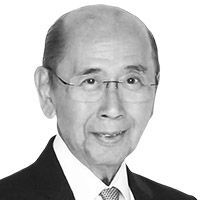BPO here to stay

Further to my column of August 15th, I find it difficult to believe what Jochelle Mendonca of India’s Economic Times (ET) said that BPOs are moving back to India. She went further and noted that “pure voice is out of fashion.”
Jomari Mercado of IT & Business Process Association Philippines (IBPAP) strongly contradicted this: “The Philippine IT-BPM industry continues to grow and as of the end of 2013 contributed $16.1B to the economy while providing employment for over 917,000 Filipinos. The voice segment continues to be robust, accounting for 62 percent of the total revenue in 2013. This sector grew 15 percent year-on-year while the entire industry posted an impressive 22-percent growth. This is in contrast to the global IT-BPM market which grew 10 percent in 2013.” The industry forecast exceeds one million employees by next year.
I learned from Marife Zamora of Convergys Philippines that they now have 55,000 employees in 34 operating sites. These numbers are indicative of the robust growth of the local industry. That is 40 percent of the global headcount of Convergys: 125,000 operating in 31 countries.
To insure competiveness, the IBPAP developed Service Management Program (SMP), a 21-unit minor designed to increase competitiveness in the global market. SMP is being rolled out across 17 state universities and colleges with support from CHED. Further there is now a tie up with the UP Open University to convert the SMP courseware to digital (www.upou.edu.ph). The Next Wave Cities Program, encouraging more IT-BPM work to be distributed outside Metro Manila, has borne fruit in the cities of Cebu, Davao, Bacolod and Iloilo.
The same ET article stated “Also helping the shift back to India is the fact……that the newer multichannel offerings — which combine email and chat – have a technology aspect that is better suited to delivery out of India. The Philippines had an edge in pure voice customer service. But if you have technology-enabled services for customer support, or for services like technology support, for that we see the center of gravity moving back here,” said KS Viswanathan, vice-president at industry body Nasscom. Convergys, a US BPO company with centers in India, is one of the companies adding agents to its multi-channel customer service offerings in India, its India head Hanumant Talwar told ET.
Krista M. Boyle, VP of Brand and Communications in the Convergys US head office, also responded to the same ET article. “Mr. Talwar was not contacted by Ms. Mendonca to comment on that particular article. The quote ascribed to him was from March 2014 and was taken out of context for the purposes of the ET article.” Ms. Boyle clarified that Convergys continues to grow in the Philippines and India. Both countries are a critical part of their strategy to ensure that they have the appropriate global footprint from which to serve clients and their customers.
Mark Lwin, CEO of AIG Philippines Insurance Co. Inc. and former head of the AIG Property Casualty BPO delivery center in Alabang also commented: “From an AIG perspective, we are not, and do not anticipate, a shift of voice work from Philippines to India as this article suggests. We have a significant voice delivery platform in Philippines.Our delivery service for voice work in Philippines continues to expand based on the quality of the language skills and the customer service aptitude we find here.”
“There are several references in the ET article, however, which highlight a more complex BPO landscape which is emerging. The definition of a “contact center” to include email, text, and chat is making it more difficult to isolate this type of work. The traditional back-office work without any direct customer contact is rarer, and as BPO’s move up the value-chain in their services, it is increasingly difficult to eliminate direct customer touch-points. Many companies are developing Centers of Excellence (COE) for this high-value work where the BPO employees have greater levels of knowledge and competency requirements in very technical areas. So, when there is a customer touch-point, it has to be executed from the COE where there is a requirement for all three competencies: customer service skills, language ability, and specific technical expertise. Where India has a strong capability for certain services, it is not unexpected that they would also offer some voice-based services in conjunction with the Center of Excellence.”
Lwin cautions: “So, in this context, the Philippines’ market share is under new pressure. We have to diversify and create the capability to deliver higher-value services which have direct customer interaction. We do not want to rely solely on the “lower value” voice work alone. That type of work probably represents a smaller and smaller proportion of the 4.3-percent growth of the US BPO market, or will be tied to other types of services which may be located in India.”
He cites business continuity as a critical consideration. While the Philippines has developed other locations for BPO service delivery, companies are looking for greater diversity in their business continuity plans or are looking for a multi-country solution to mitigate risk. In this context, the country’s effort to promote resiliency is an important business catalyst which could make Philippines a more competitive choice. This is very important when you consider that the Philippines is considered by the UN as the third most vulnerable to natural disasters after Vanuatu and Tonga. We have to be better prepared and more resilient than we were when Yolanda hit us.
AIG has a similar policy as Convergys: a global network of shared services centers. Lwin further commented: “We are even growing on-shore centers in the US and other countries for certain services. The Philippines remains the fastest growing of all our delivery locations, but it is one (major) part of a global strategy rather than the only part. This more-diversified strategy reflects the growing sophistication of the BPO/voice market and the need for greater risk mitigation.”
Yes the BPO market is indeed thriving, but embedded in the ET article and the words of caution from Mark Lwin seems to be the shape of the emerging future. Let us not be complacent!!!
- Latest
- Trending































